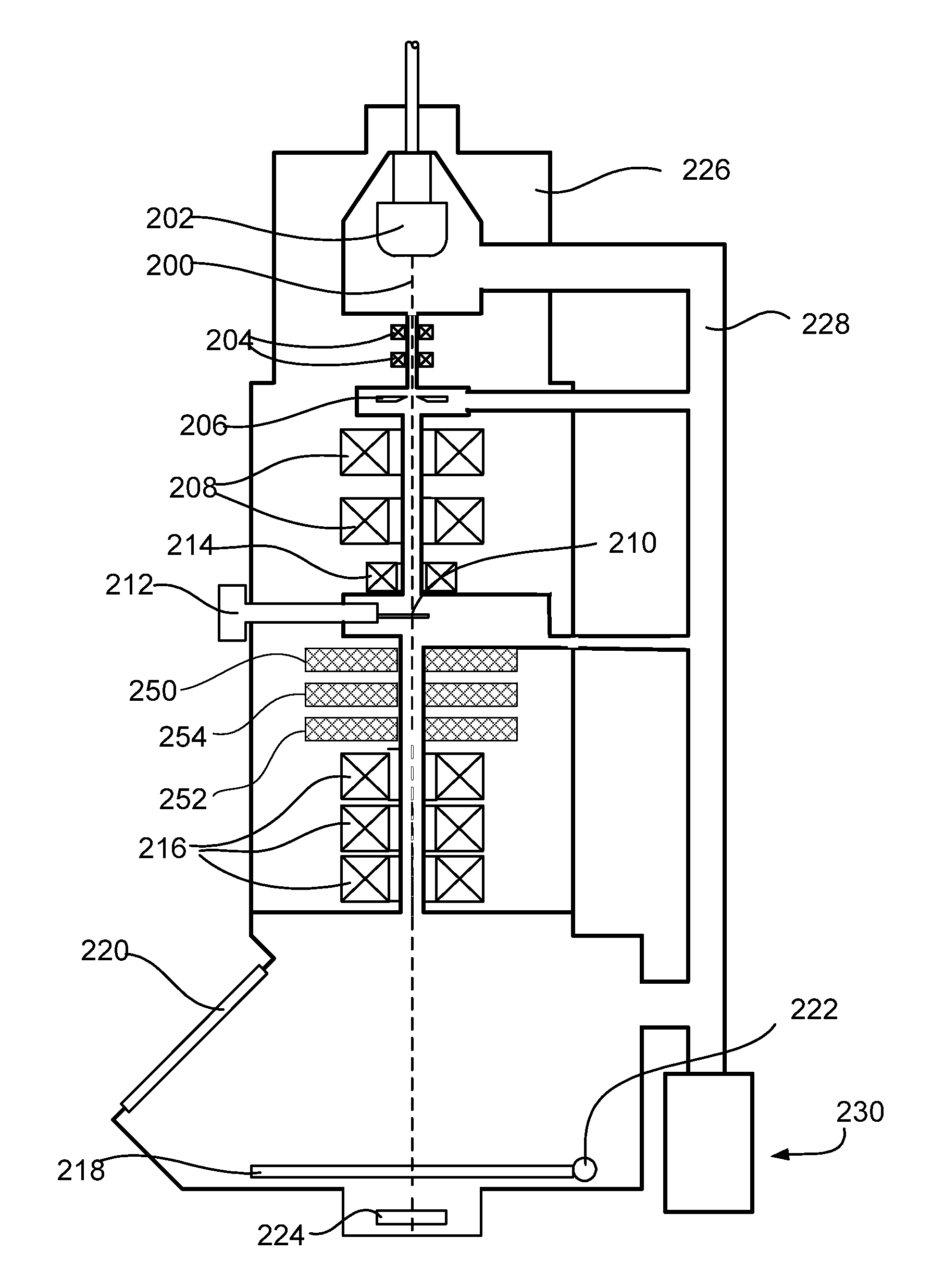Distortion Free Stigmation of a TEM
a stigmation and distortion-free technology, applied in the field of distorsive particle apparatuses, can solve the problems of hysteresis, drift of image, and ld, and achieve the effect of reducing astigmatism and reducing astigmatism
- Summary
- Abstract
- Description
- Claims
- Application Information
AI Technical Summary
Benefits of technology
Problems solved by technology
Method used
Image
Examples
Embodiment Construction
[0028]A TEM according to the invention is characterized in that a third stigmator is positioned between the objective lens and the detector system, as a result of which a third degree of freedom is created for reducing the linear distortion.
[0029]The invention is based on the insight that it is possible to excite three stigmators in such a manner that astigmatism in both modes (imaging mode and diffraction mode) is possible without Linear Distortion. Therefore also no dissipation changes occur, and thus no drift is introduced by change of stigmator dissipation. It will be clear to the person skilled in the art that the stigmators should not be imaged upon each other: it should be an independent set of stigmators
[0030]Preferably the three stigmators are placed between the objective lens and the imaging optics. The magnification of the imaging optics can then be changed without having to change stigmator excitation, as all lenses of the imaging optics are between the stigmators and th...
PUM
 Login to View More
Login to View More Abstract
Description
Claims
Application Information
 Login to View More
Login to View More - R&D
- Intellectual Property
- Life Sciences
- Materials
- Tech Scout
- Unparalleled Data Quality
- Higher Quality Content
- 60% Fewer Hallucinations
Browse by: Latest US Patents, China's latest patents, Technical Efficacy Thesaurus, Application Domain, Technology Topic, Popular Technical Reports.
© 2025 PatSnap. All rights reserved.Legal|Privacy policy|Modern Slavery Act Transparency Statement|Sitemap|About US| Contact US: help@patsnap.com



